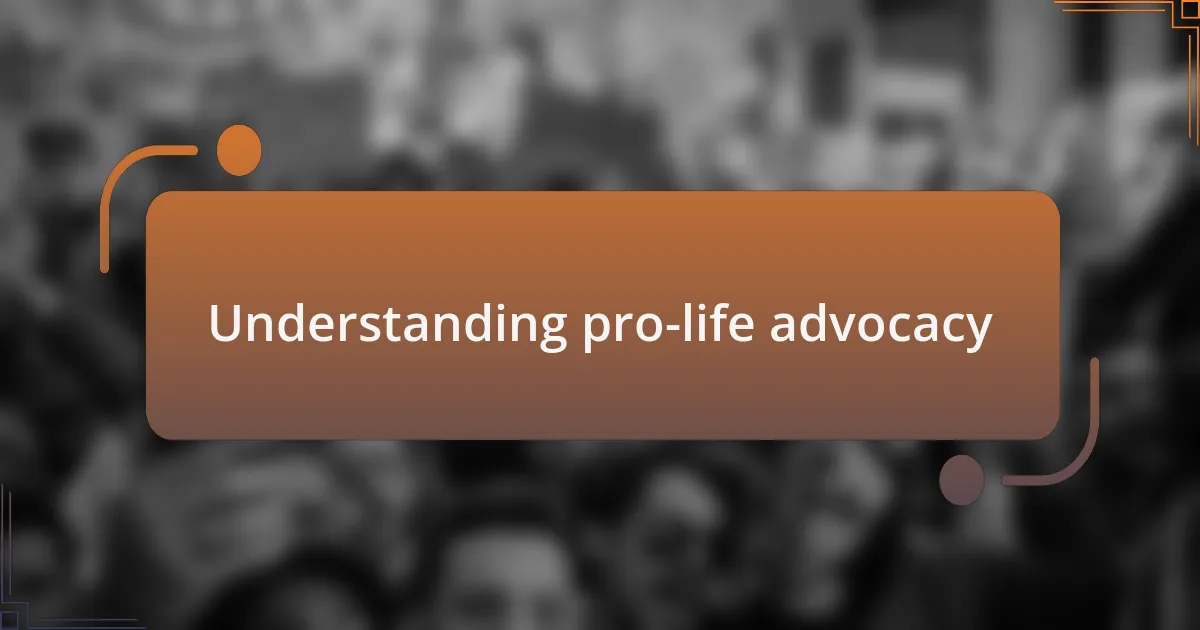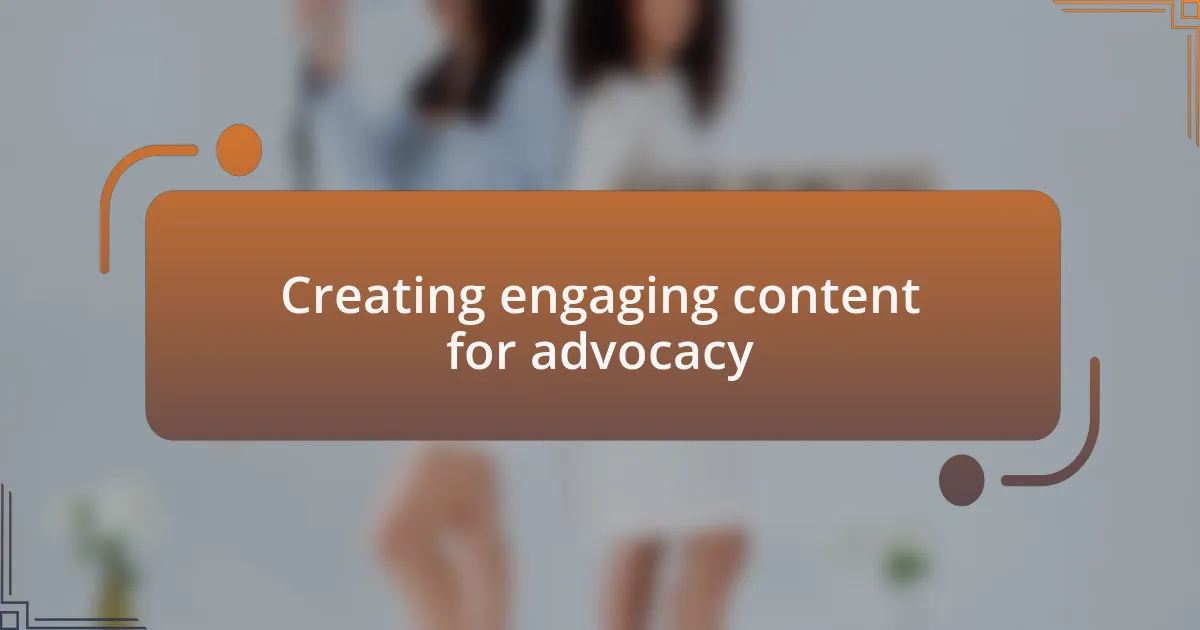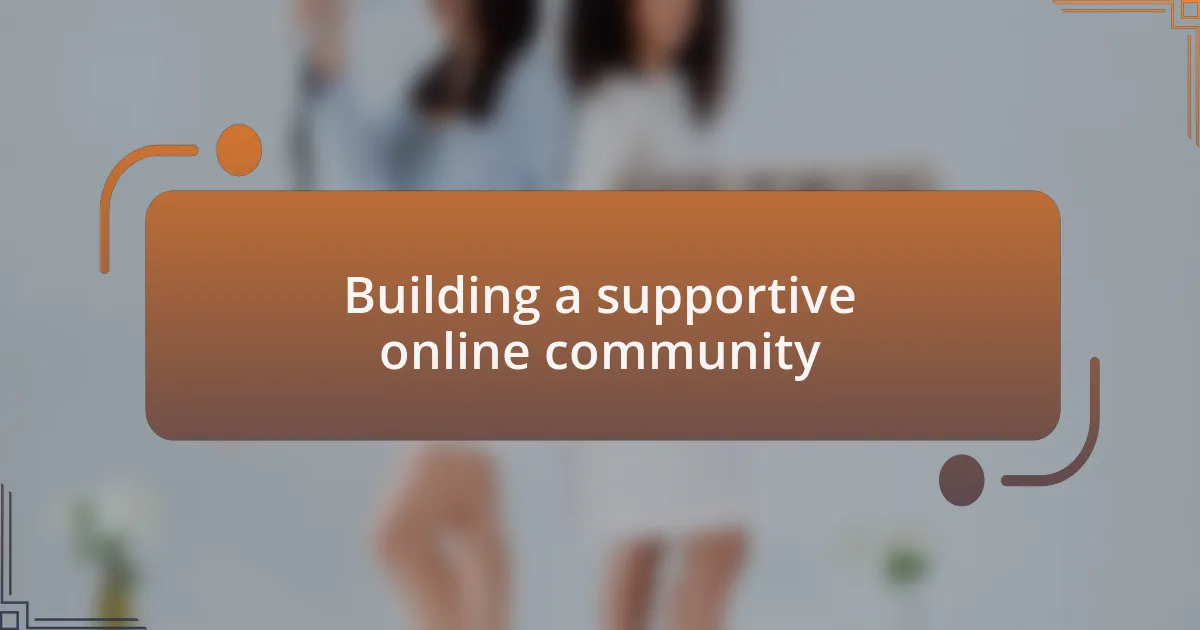Key takeaways:
- Pro-life advocacy values every human life from conception to natural death and emphasizes empathy in discussions with differing opinions.
- Engaging content for advocacy benefits from personal narratives, impactful visuals, and thought-provoking questions to foster dialogue.
- Building a supportive online community involves creating safe spaces for sharing experiences, consistency in communication, and nurturing connections for trust.
- Vulnerability in sharing personal stories can facilitate deeper connections and understanding within the community.

Understanding pro-life advocacy
Pro-life advocacy is rooted in the belief that every human life is valuable from conception until natural death. I remember my first encounter with passionate advocates at a rally; their conviction and heartfelt stories moved me deeply. It raised a question in my mind: how often do we reflect on the intrinsic worth of every individual life?
Understanding pro-life advocacy also involves recognizing the diversity of opinions surrounding this issue. At times, I found myself in conversations with friends who held different views. Their insights challenged me, prompting me to think critically about the nuances of our position. This dialogue emphasizes the importance of empathy; can we really advocate for life without considering the complexities of people’s circumstances?
Moreover, pro-life advocacy isn’t just about opposing abortion; it’s about promoting a culture of life that supports mothers, children, and families. I recall volunteering at a local pregnancy support center where I witnessed firsthand the struggles women face. It made me ponder—what resources can we provide to uplift and empower women facing unplanned pregnancies?

Creating engaging content for advocacy
Creating engaging content for advocacy requires an authentic connection with your audience. I once shared a personal story about my journey to understanding the complexities of pregnancy on social media. The heartfelt responses from those who related to my experience illuminated the power of vulnerability; why don’t we use our own narratives more to foster understanding?
Visuals play a crucial role in grabbing attention. I remember attending a pro-life march and capturing candid moments of unity and compassion. Sharing those images online not only showcased our community spirit but also sparked conversations. How often do we overlook the impact of a powerful image in conveying our message?
Finally, asking thought-provoking questions can catalyze engagement. I like to pose questions like, “What does supporting women truly mean in the context of a pro-life message?” This approach invites others to ponder and share their viewpoints. In my experience, fostering dialogue around these questions encourages deeper connections and enriches our advocacy efforts.

Building a supportive online community
Creating a supportive online community has been one of my most rewarding experiences. During a particularly poignant moment, I organized an online support group where individuals could share their feelings and stories related to unexpected pregnancies. Seeing participants uplift one another with heartfelt encouragement reminded me of the profound impact we can have when we create safe spaces; how many people long for that sense of belonging in a world that often feels isolating?
I’ve learned that consistency in communication fosters trust within the community. By regularly sharing insightful resources and responding to personal messages, I noticed a marked increase in engagement. It was as if I had opened a door that allowed others to step in and feel heard. This two-way interaction was significant; how can we expect a community to thrive if we don’t actively nurture those connections?
Sometimes, real connections spark from shared experiences. I recall a moment when a community member expressed their fears about an unplanned pregnancy. I shared my own fears from years past, which opened up a beautiful dialogue. It was eye-opening to see how vulnerability can create bridges; isn’t it fascinating how our collective stories can unite us in ways we never expected?